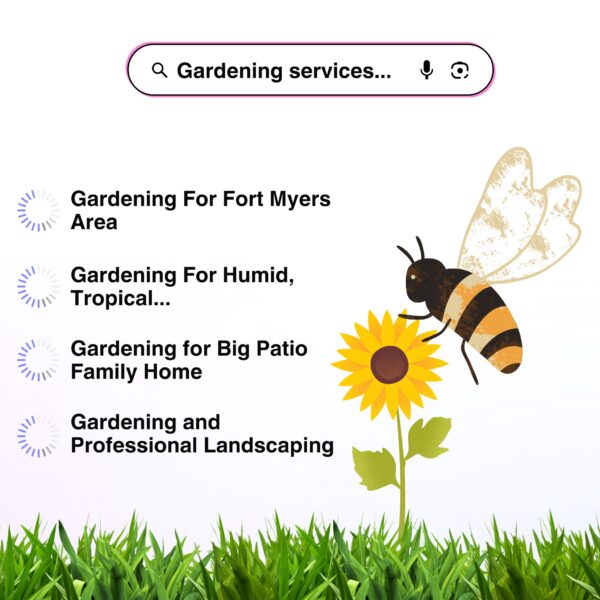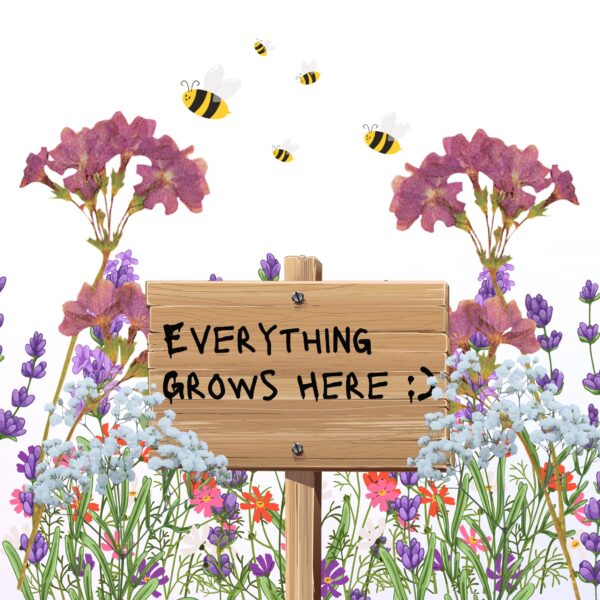Finding new clients isn’t just a milestone—it’s the heartbeat of business growth. Whether you’re a seasoned entrepreneur or launching your first venture, the challenge of consistently attracting leads can feel overwhelming. In today’s noisy, competitive landscape, old tactics just don’t cut it anymore.
Attracting clientele is like gardening: you can’t just scatter seeds anywhere and hope for a lush harvest and tons of bees to appear like magic the very next day. You need to know your soil, plant with intention, tend to your crops, and provide the right conditions for growth. Only then will you see strong, healthy results.
You need a system—a combination of proven strategies, smart tools, and a human touch—to stand out, build trust, and turn prospects into loyal customers.
That’s where this blog comes in. We’re diving deep into ten actionable ways to find, get, and keep consumers of your product(s), with fresh research, expert tips, and a practical look at how technology can help you lock in clients faster by making your everything you produce shine. The more you know about your garden, the more you can do, share, and tailor to attract the right people. Let’s get started!
If you’d like to skip it and go straight to integrating smart tools, visit out Mastering AI Adoption Guide here.

1. Reflect — “How Do I Find Clients?”
There are infinite ways on how to find clients; that will never go away – what needs to go away is your focus on the “I” and turn it into “Them”. So, before you even think about launching a campaign or sending a pitch, you need to know exactly who you want as a client. Many businesses make the mistake of casting too wide a net, hoping anyone and everyone will bite. The reality? If you try to appeal to everyone, you’ll resonate with no one. Brands using data-driven audience targeting can dramatically reduce wasted, time, effort, ad spend and improve their customer acquisition cost (CAC).
Why Most Businesses Fail at Attracting Buyers
A lot of businesses fall short because they never take the time to clearly define their ideal client. Instead, they rely on guesswork, copy competitors, or create messaging that’s too broad or generic. Without a specific target, marketing becomes unfocused and ineffective. Some even dive into client acquisition with no real plan, trying random tactics or “hoping something sticks,” which only leads to wasted resources. Others ignore warning signs—like poor response rates or lack of engagement—because they’re not tracking what actually works. Above all, if you don’t know who you’re trying to reach, you can’t tailor your approach or stand out in a crowded market.
Building Your Ideal Client Profile (ICP)
Identifying your dream client goes beyond basic demographics. The best client profiles combine hard data with real-world insights, helping you focus your marketing and sales efforts where they matter most.
Start by jotting down the essentials—things like company size, industry, and geographic location. But don’t stop there. Consider what truly sets your ideal clients apart: What roles do they hold? What problems do they urgently need to solve? Do they operate in a unique way, use specific technologies, or spend time in niche communities? The more distinctive (and relevant) your attributes, the more likely you are to spot patterns and tailor your outreach for maximum impact.
To build your ICP, try this exercise:
Pick the three most defining and valuable characteristics of your best-fit customers. These could range from a specific pain point they face to the platforms they frequent or even their preferred way of working.
Here’s a template to help you organize your thinking:
Ideal Client Profile (ICP) Worksheet
|
Attribute
|
Your Best Guess / Notes
|
Example
|
|---|---|---|
|
Organization size
|
20–60 employees
|
|
|
Decision-maker’s role
|
Director of Revenue Operations
|
|
|
Core pain point
|
Struggling to understand sales losses
|
|
|
Preferred business approach
|
Prioritizes design, fast iteration
|
|
|
Technologies/tools they use
|
Uses Salesforce, Slack, Zapier
|
|
|
Type of business
|
B2B SaaS, e-commerce
|
|
|
Typical budget or price sensitivity
|
Comfortable with $8k–$20k ARR
|
|
|
Geographic focus
|
Urban Northeast, Florida, or LatAm
|
|
|
Niche communities or channels they frequent
|
SaaS growth forums, specific LinkedIn groups
|
Quick tips to fill your ICP:
- Use surveys, client interviews, and social listening to gather insights.
- Review your past client list for common traits among your happiest or most profitable customers.
- Don’t be afraid to get specific – the narrower your ICP, the stronger your messaging and targeting will be.’
A Final Tip from a real Reddit User – if you want to use your current client base as research:
Comment
byu/donaltramp699 from discussion
inGrowthHacking
A well-defined ICP isn’t just a marketing exercise; it’s your north star for everything from outreach to product development. When you know exactly who you’re talking to, it’s much easier to create offers, content, and conversations that genuinely resonate.
2. Content + Authority
Once you’ve locked in your ICP and USP, it’s time to show the world what you know. Sharing expertise through valuable content isn’t just good karma—it’s a proven way to attract new customers and build trust before you ever get on a call.
High-Value Content as a Magnet for New Clients
“(88%) of B2B marketers use content marketing as part of their strategy”
But whether you are B2B or B2C focused; content marketing works because it answers real questions and solves real problems. In fact, companies with robust content strategies convert prospects at nearly six times the rate of those who don’t bother. The secret? Create resources that are genuinely useful: blog posts, guides, videos, or checklists that address the pain points your ideal clients are searching for. Another shocking statistic shared by PenFriend.AI is:
“Marketers who prioritize blogging are 13x more likely to see positive ROI. “
So get your creativity going because people, users, and potential clients are not stopping their curiosity as to what they could learn from your content any time soon…
Mapping Content to the Buyer’s Journey
Not all content is created equal. Prospects at different stages of their journey need different things. Early on, they want helpful, non-salesy information. As they move closer to a decision, they start looking for authority—case studies, testimonials, or in-depth comparisons. By meeting people where they are, you earn their trust and move them closer to becoming a client.
Here’s how to tailor your content for each step of your prospects’ decision process:
- Awareness: Educational blog posts or social tips that address common industry problems.
- Consideration: In-depth guides, comparison sheets, or webinars that help prospects evaluate their options.
- Decision: Case studies, testimonials, or demos that prove your expertise and help prospects take action.
Matching your content to each stage not only boosts conversions that feel seamless, but also makes your business gain authority around topics they care about. If all of this sounds a bit too complicated, no worries, it’s almost 2026 and now there are AI Consultants you could find on LinkedIn, who also have marketing backgrounds and can help you with implementing these strategies even faster without the need to hire a full-time marketing team.

3. The Acquisition Engine
You’ve built credibility and generated some buzz. Now it’s time to turn that interest into real opportunities. A systematic approach helps you get new clients consistently, not just by luck.
Optimizing Your Digital Presence
Your website and social channels are your digital storefront. If they’re outdated, slow, or confusing, you’ll lose new leads before you even know they were interested. Focus on discoverability, clarity (clean design and messaging), and conversion (strong calls-to-action, easy contact forms). Add email marketing and social engagement to nurture leads over time. Even small tweaks – like faster load speeds or clearer headlines – can make a big difference.
Multichannel Marketing & Outreach
People don’t just hang out in one place online. Your clients might see your ad on Facebook, read your email newsletter, and then Google your business before reaching out. That’s why a multichannel approach, combining paid ads, organic content, and targeted emails—is so effective. Make sure your branding and messaging are consistent everywhere, and use retargeting to bring interested prospects back into the fold. A focused retargeting campaign, for example, can recapture leads who almost slipped away.
The Human Touch—Personalized Outreach
Don’t underestimate the power of a personal touch, even in the digital age. Automated tools and CRM systems help you keep track, but a tailored message or a genuine conversation can be the tipping point for a new client. Networking, referrals, and direct outreach all play a role. Use automation for routine follow-ups, but make sure your communication feels like it’s coming from a real person – not a robot.
4. Retention as a Growth
Landing a new client is a win, but the real magic happens when you keep them happy and turn them into loyal advocates. It’s not just more profitable—it’s how you create a self-sustaining growth engine. Also, if we continue along the lines of gardening… your clients are like flowers, the more you have the better. Your clientele makes your business look good and attracts more people that want to be part of whatever it is that you’re selling. If it’s packed with people, it probably has good soil!

But how do you keep them? There’s no easy answer, competition is rough in almost every industry but here are some realistic tips:
Delivering an Outstanding Client Experience
A smooth, frictionless client journey sets you apart. Proactive communication, reliable support, and the little “above and beyond” touches make clients want to stick around. Plus, happy employees create happier clients and happy customers are frequently eager to suggest others to your firm. When your team is empowered and engaged, your clients feel it too.
Community & Social Proof
Nothing builds trust like seeing other people succeed with your product or service. Encourage satisfied clients to leave reviews, share their stories, or participate in case studies. Build a sense of community—whether through online forums, events, or social media groups—to foster loyalty and word-of-mouth. Case in point: brands with strong communities and visible testimonials consistently outperform their peers. Actually, a great advice you can start next week for your business is:
“Display your recommended products with its reviews on your promotional emails as social proof to boost your sales”
Loyalty & Referral Programs
Want to turn clients into your best marketers? Let’s talk about essential strategies to catapult growth:
“55 percent of people discovered a new brand through word-of-mouth.”
Make it worth their while. Structured rewards and referral incentives encourage satisfied customers to spread the word. The best programs are simple (“Give $20, Get $20”) and promoted at the perfect moment—when someone’s just had a great experience. Well-designed programs don’t just boost retention—they bring in new clients who already trust you.
5. The Present Solution—AI
The next wave of client acquisition is being driven by artificial intelligence and automation. The best part? These tools don’t replace your expertise—they multiply your impact, helping you reach, impress, and convert new clients faster than ever before.
Leveraging AI for Acquisition & Retention
AI is no longer just for tech giants. Here’s how businesses of all sizes are using it to win more clients:
- Predictive Analytics & Lead Scoring: AI-powered tools sift through mountains of data to predict which leads are most likely to convert. This lets you prioritize outreach and spend time where it counts. For example, churn predictions can help your success team identify dissatisfied clients sooner, and that way prolong the client retention cycle. When it comes to generating leads, according to marketing giant – blueshift; 86% of brands using AI recommendations report lower CAC; 84% using AI retargeting recover more lost conversions. This happens for a very simple reason – humans do not have the capacity nor memory to handle all the retargeting needed for X amount of leads, every day.
- Hyper-Personalization: AI can customize ads, emails, and even website content to match each prospect’s preferences and behavior. This level of personalization used to be impossible at scale, but now it’s standard for top-performing businesses. Research from BCG highlights that 31% of U.S. consumers say personalization makes their buying experience more enjoyable. Another simple way you can Hyper-Personalize content during one on ones with clients is by generating AI Decks in real time with the help of an AI Deck Builder. Super simple, the client said something that might change the strategy of your pitch completely? Just change your prompt and give it two minutes to update!
- Campaign Optimization: Platforms driven by AI automatically adjust your marketing campaigns in real time, reallocating budget and creative to the highest-performing channels or audiences. This might sound out of reach right now, but there are solutions like Invoca, are helping clients with real time data that saves their budgets. Some real use cases they have up in their website mention companies like Banner Health, Rogers Communications, and Rick’s Custom Fencing & Decking. This means that almost any industry or company size also has access to this type of technology.
- Retention Intelligence: AI helps you spot red flags—like declining engagement or negative feelings with sentiment analysis—so you can act before a client leaves. Another way you could apply this is integrating AI to your renewal process. This small Youtube account “Artificial intelligence for Insurance” shared an interesting video on how they are transforming their own with AI. In short; in the case study, they showed how using AI throughout the 90-day renewal process allowed their team to automatically detect client hesitation, trigger timely follow-ups, and personalize each renewal touchpoint—resulting in fewer lost accounts and a smoother experience for both clients and staff.
Check out the real use case down here if you’re curious:
- Scenario—Locking in Clients with Smart Presentations: Picture this: you’re pitching a high-value prospect who’s meeting with three competitors. With AI-powered tools like Aurora Slides, you can take raw ideas, analytics, and inspiration and instantly transform them into a visually stunning, data-driven presentation tailored to that client. No more late-night formatting or rushed design work. You’re the first in their inbox with a competitor analysis pitch deck + custom proposal that’s both beautiful and smart—and that’s often the difference between a “maybe” and a “yes.”
- Original Content: You might be thinking using AI will only make your content sound generic, since your competitors are using the same tools. However, it’s more about how you use these tools and not how many people also have access to them. So here is where your unique experiences as a business come to play. Also, leverage your team’s personality and real-life client stories to help the AI tool come up with funny, interesting, and original content. Language models are really good at repurposing what you feed to them.
The more you have to share (see it as raw material), the cooler the outcome will be. You can’t compete simply by crafting nice content, faster – now everyone can do that with AI – but you can compete by shaping your current original essence into well crafted, ready-to-publish, unique content.
AI is here to work alongside you, not instead of you. Used right, it helps you impress, respond quickly, and lock in new clients before your competitors even get out of the gate.
KPIs that Matter
If you want to get better at finding and keeping regular consumers, you have to measure what works—and what doesn’t. Key Performance Indicators (KPIs) turn gut feelings into actionable insights.
Track the essentials:
- Customer Acquisition Cost (CAC): How much are you spending to get each new client?
- Customer Lifetime Value (CLV): What’s the long-term value of a typical client? This one really matters because it also helps to measure customer loyalty.
- Conversion Rate: How many leads turn into paying clients?
- Churn Rate: How many clients are you losing, and why?
- New Client Growth: Are you building momentum month over month?
Break these down by channel and campaign, check them regularly, and use what you learn to refine your approach. The best client acquisition strategies are always evolving.
Key Takeaways
Attracting and keeping new clientele isn’t about luck—it’s about building the right foundation, sharing real expertise, optimizing your outreach, and using smart tools to multiply your impact. If you focus on these ten strategies, you’ll build more than a client list. You’ll build a reputation.
Ready to make your next move? Get started with Aurora or put the ideas from this blog to work so this upcoming year 2026, you can impress, persuade, and win new business, faster than ever.

Frequently Asked Questions (FAQs)
How can I find new clients if I’m just starting out?
A: Start by defining your ideal client and offering genuine value—then use content marketing, networking, and smart referrals to build trust. And do a lot of research when it comes to your industry, check out Lead Gen guides, Reddit discussions, and YouTube videos.
What is the most cost-effective channel for client acquisition?
A: It depends on your industry and audience, but organic content, email marketing, and referrals are often the lowest-cost, highest-ROI options.
Can AI really help me get clients?
A: Absolutely! AI can help you target better, personalize every interaction, and act faster than ever — here are some some tips on how to use AI to Get Clients in 2025.
How does Aurora Slides help with new client acquisition?
A: It saves you time and effort you could be spending elsewhere! So instead of trying to find the best AI for PowerPoint presentations, you can evolve into utilizing a solution that was built with AI at its core. When it comes to the clients, Aurora Slides lets you turn ideas and data into beautiful, persuasive presentations in minutes – giving you a real edge in impressing and winning over new clients.
